-
Seeking new ideas for mobile ad hoc networks (MANETs)
Troops operating in forward locations without telecommunication infrastructure often rely on a mobile ad hoc network (MANET) to communicate and share data. A constraint with current MANETs is they can only scale to around fifty nodes before network services become ineffective. DARPA is exploring new technologies unencumbered by Internet Protocols (IP) which could be the key to enabling large MANETs. The Internet facilitated far-reaching technical advances, but in this technology area the Internet may be the roadblock.
-
-
Draft of the 2013 U.S. National Climate Assessment is out
As mandated by the U.S. Global Change Research Act (GCRA), the U.S. Global Change Research Program (USGCRP) is currently producing a National Climate Assessment (NCA). The NCA is a report to inform the president, the Congress, and the American people about the current state of scientific knowledge regarding climate change effects on U.S. regions and key sectors, now and in the coming decades. The National Research Council (NRC) says that as the United States continues to engage with the threats, opportunities, and surprises of climate change in its many manifestations, the 2013 NCA should prove to be a valuable resource.
-
-
DHS chemical plant security program hobbled by problems, poor oversight
A DHS program responsible for the security of chemical facilities, such as the West Fertilizer Company plant in Texas, has been ineffective owing to a number of issues, leading federal investigators to wonder “whether it can achieve its mission, given the challenges the program continues to face.”
-
-
U.S. policy may lead to growing global shortage of helium
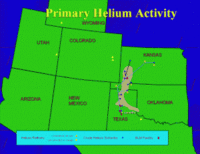
Helium is an essential resource in technologies such as medical imaging, rocket engines, and surveillance devices. In response to the element’s scarcity, the United States has been stockpiling helium since the 1960s in a National Helium Reserve called the Bush Dome, a deep underground reservoir outside of Amarillo, Texas. In 1996 the Helium Privatization Act mandated that the Department of the Interior sell off all the stockpiled helium by 2015. Scientists say that this action discourages the active exploration of helium since companies can buy it from the United States at a cheap price and sell it at a premium. The result will be a growing shortage of helium.
-
-
Smartphone app locates gunfire source
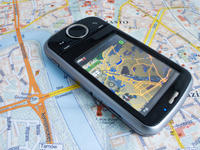
For the last decade, the Department of Defense has spent millions of dollars to develop sophisticated sniper location systems which are installed in military vehicles and require dedicated sensor arrays. Scientists have now developed a smartphone app that tracks gunfire and points in the direction the shot came from.
-
-
New fertilizer can be used to grow food – but not build bombs
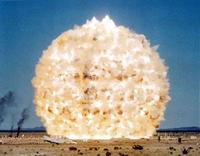
Ammonium nitrate fertilizer is used in agriculture, but when mixed with a fuel such as diesel, it is highly explosive. It was used in about 65 percent of the 16,300 homemade IEDs in Afghanistan in 2012.About 1,900 troops were killed or wounded in IED attacks in 2012, 60 percent of American combat casualties. There have been more than 17,000 global IED incidents in 123 countries in the past two years. Timothy McVeigh used ammonium nitrate in Oklahoma City in 1995. Scientists have developed a fertilizer that helps plants grow but cannot detonate a bomb.
-
-
EPA slams State Department’s Keystone XL pipeline review
The Environmental Protection Agency (EPA) on Monday criticized the State Department’s environmental impact review of the Keystone XL pipeline, saying there was not enough evidence to back up key conclusions in the review on emissions, safety, and alternative routes. The EPA’s comments could have a negative effect on the approval of the project, but if the project is approved, the comments could serve as supporting evidence in any ligation against the pipeline.
-
-
River beds keep moving, increasing flood risk
A detailed study of shifting river beds could hold the key to more accurate flood prevention. It is commonly believed that the elevation of river beds is more or less constant, so any change in flood risk is due to changes in hydrology. Researchers find, however, that there is a significant trends in the elevation of river beds, an indication that river channels are filling in with sediment or that sediment is being eroded through time.
-
-
DOE seizes $21 million from Fisker after company fails to make monthly payment on loan
The administration seized $21 million from auto company Fisker Automotive, less than a month after the automaker laid off three quarters of its employees due to financial and production problems. Fisker, based in Anaheim, California, was awarded a $192 million loan as part of a program started by the Obama administration to boost electric cars and other alternative-fuel vehicles.
-
-
Winner announced in the first DARPA FANG Challenge
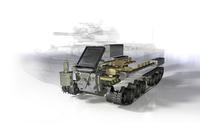
The Ground Systems team outpaces more than 200 teams and 1,000 participants, submitting the winning mobility in the Fast Adaptable Next-Generation Ground Vehicle (FANG) Mobility/Drivetrain Challenge, and drivetrain subsystem design and claiming the $1 million prize.
-
-
U.S. science teachers are not fully prepared for new science teaching standards
New voluntary guidelines for science education were unveiled earlier this month by the advocacy group Achieve in collaboration with twenty-six states. The new standards call for more hands-on learning and analysis and cover fewer science topics, but in greater depth.A new report says, however, that America’s K-12 teachers are not fully prepared to meet a new set of science standards.
-
-
New submarine hunting program reaches milestones
DARPA’s Distributed Agile Submarine Hunting (DASH) Program has tested two complementary prototype systems as part of its Phase 2 development effort. The prototypes demonstrated functional sonar, communications, and mobility at deep depths. The successful tests furthered DASH’s goals to apply advances in deep-ocean distributed sonar to help find and track quiet submarines.
-
-
DARPA shows smaller pixels, smaller thermal cameras for soldiers
The U.S. military uses long-wave infrared (LWIR) cameras as thermal imagers to detect humans at night. These cameras are usually mounted on vehicles as they are too large to be carried by a single soldier and are too expensive for individual deployment. DARPA researchers, however, recently demonstrated a new five-micron pixel LWIR camera that could make this class of camera smaller and less expensive.
-
-
Interior Dept. releases progress report on U.S. Water Census
The U.S. Interior Department issued released a report to Congress on the progress of the National Water Census. As competition for water grows — for irrigation of crops, for use by cities and communities, for energy production, and for the environment — the need for the National Water Census and related information and tools to aid water resource managers also grows. The Water Census will assist water and resource managers in understanding and quantifying water supply and demand, and will support more sustainable management of water resources.
-
-
Robot makes inspecting power lines simple, inexpensive
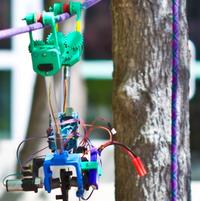
Mechanical engineers invented a robot designed to scoot along utility lines, searching for damage and other problems that require repairs. Made of off-the-shelf electronics and plastic parts printed on an inexpensive 3D printer, the SkySweeper prototype could be scaled up for less than $1,000, making it significantly more economical than the two models of robots currently used to inspect power lines.
-
More headlines
The long view
New Technology is Keeping the Skies Safe
DHS S&T Baggage, Cargo, and People Screening (BCP) Program develops state-of-the-art screening solutions to help secure airspace, communities, and borders
Factories First: Winning the Drone War Before It Starts
Wars are won by factories before they are won on the battlefield,Martin C. Feldmann writes, noting that the United States lacks the manufacturing depth for the coming drone age. Rectifying this situation “will take far more than procurement tweaks,” Feldmann writes. “It demands a national-level, wartime-scale industrial mobilization.”
How Artificial General Intelligence Could Affect the Rise and Fall of Nations
Visions for potential AGI futures: A new report from RAND aims to stimulate thinking among policymakers about possible impacts of the development of artificial general intelligence (AGI) on geopolitics and the world order.
Smaller Nuclear Reactors Spark Renewed Interest in a Once-Shunned Energy Source
In the past two years, half the states have taken action to promote nuclear power, from creating nuclear task forces to integrating nuclear into long-term energy plans.
Keeping the Lights on with Nuclear Waste: Radiochemistry Transforms Nuclear Waste into Strategic Materials
How UNLV radiochemistry is pioneering the future of energy in the Southwest by salvaging strategic materials from nuclear dumps –and making it safe.
Model Predicts Long-Term Effects of Nuclear Waste on Underground Disposal Systems
The simulations matched results from an underground lab experiment in Switzerland, suggesting modeling could be used to validate the safety of nuclear disposal sites.
